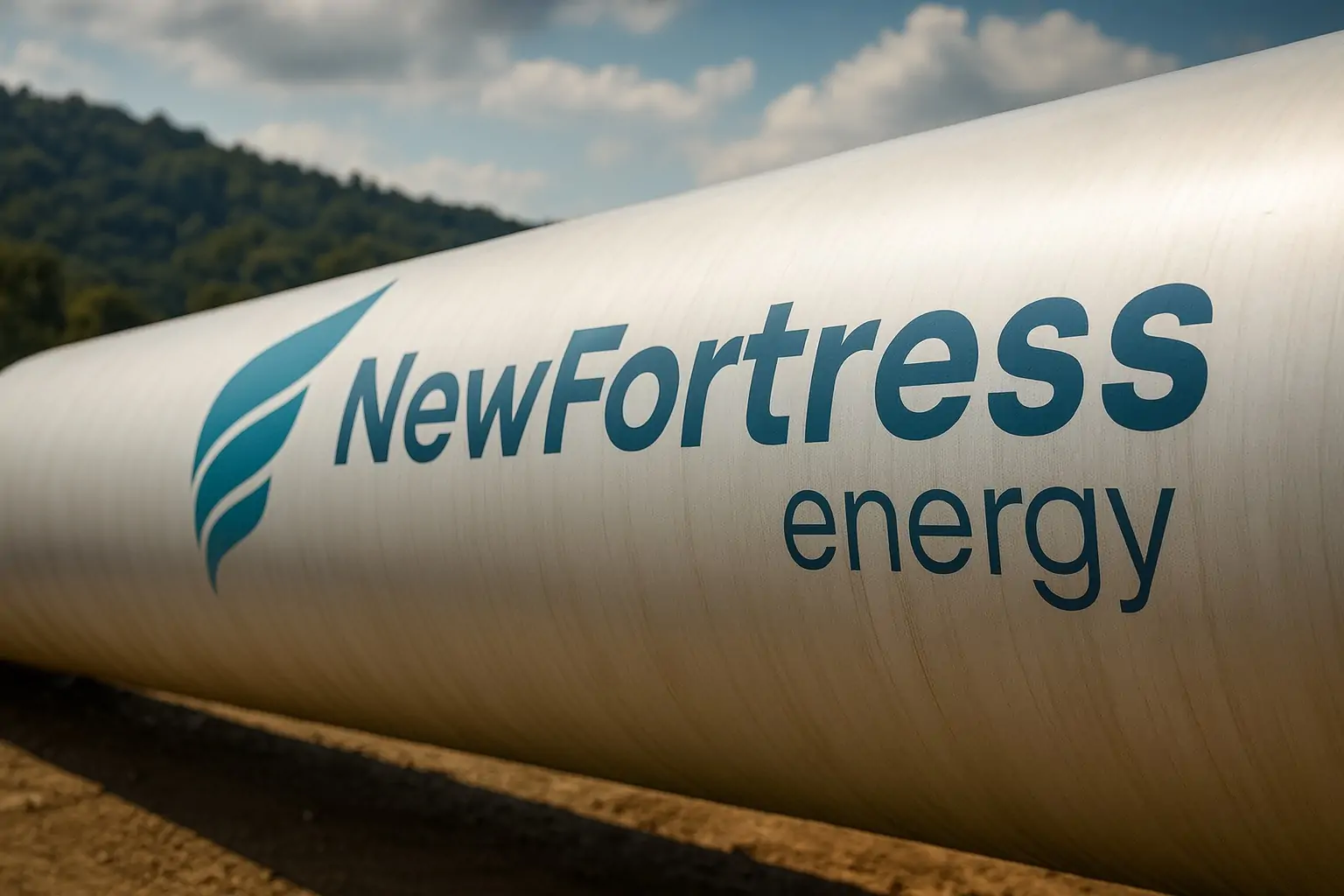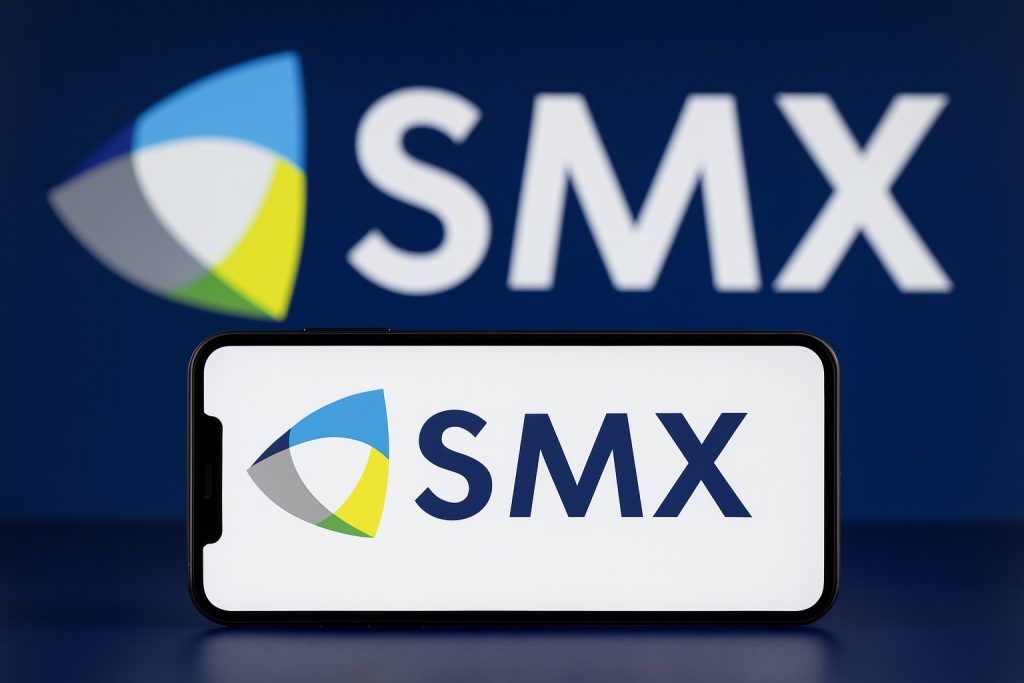New Fortress Energy (NASDAQ: NFE) posted a steep Q3 2025 loss, missed an interest payment, was downgraded to ‘Restricted Default,’ and still saw its stock spike on a key debt amendment. Here’s what investors need to know as the December 15 deadline looms.
- Q3 2025 was brutal: Revenue plunged to about $327 million, and New Fortress posted a net loss of roughly $300 million, versus a small profit a year earlier. [1]
- Interest costs exploded: Quarterly interest expense nearly tripled to around $210.6 million, putting huge pressure on cash flow. [2]
- Missed coupon and ratings shock: The company missed the November 17 coupon on its 12% 2029 senior secured notes, prompting Fitch to downgrade NFE to ‘RD’ (Restricted Default) and its notes to deep‑junk territory. [3]
- Forbearance buys a few weeks: A forbearance agreement with holders of the 2029 notes pushes that interest due date out to December 15, 2025, giving NFE a narrow window to advance restructuring talks. [4]
- Big debt deal fuels a violent stock bounce: An Eleventh Amendment to a key letter of credit facility extends its maturity to March 31, 2026, suspends leverage covenants, removes minimum liquidity requirements, and limits debt payments and dividends — and helped NFE stock surge more than 20% in extended trading. [5]
- Going‑concern warning: Management says there is “substantial doubt” about NFE’s ability to continue as a going concern without fresh capital or a broader restructuring. [6]
Q3 2025: heavy loss, shrinking revenue, soaring interest
New Fortress Energy’s long‑delayed third‑quarter 2025 numbers finally arrived today — and they underline just how tight the company’s situation has become.
According to a summary of the results, for the quarter ended September 30, 2025:
- Sales: $301.37 million (vs. $505.72 million a year earlier)
- Total revenue: $327.37 million (vs. $567.54 million)
- Net loss: $299.97 million (vs. net income of $8.14 million)
- Diluted EPS from continuing operations:‑$1.07 (vs. $0.03 a year ago) [7]
For the first nine months of 2025, NFE racked up:
- Revenue: $1.10 billion (down from $1.69 billion)
- Net loss: about $1.06 billion, versus a $28 million profit a year earlier [8]
Reuters reports that quarterly interest expense jumped to roughly $210.6 million, from around $71.1 million a year earlier, as the company’s heavy debt load and rising borrowing costs bit into earnings. [9]
In its latest SEC filing, management explicitly prepared the accounts on a “going concern” basis but warned that there is substantial doubt about NFE’s ability to keep operating without new financing, asset sales, or a broader recapitalization. [10]
A missed coupon and a flurry of debt maneuvers
The financial stress is now centered squarely on NFE’s high‑coupon notes and bank facilities.
1. The missed interest payment
- NFE did not pay the interest due around November 17, 2025 on its 12% senior secured notes due 2029, totaling about $2.7 billion in principal. [11]
- To avoid an immediate default, the company signed a forbearance agreement with noteholders that extends the deadline to December 15, 2025. [12]
Bond market outlet BondbloX notes that the move pushed NFE’s bonds deep into distressed territory, with one 8.75% 2029 issue trading around 10.5 cents on the dollar — levels typically associated with very high default expectations. [13]
2. Forbearance agreement details
In the company’s own description and related coverage:
- The forbearance covers new senior secured notes due 2029, temporarily preventing those creditors from enforcing remedies over the missed payment.
- The agreement effectively pushes the November 17 coupon to December 15, assuming NFE stays in compliance with the forbearance terms. [14]
- During this period, management says it plans to “work constructively” with stakeholders to advance restructuring options. [15]
3. Eleventh Amendment to the Letter of Credit facility
In parallel, NFE struck a major deal with its bank group.
According to SEC‑linked summaries and coverage from Investing.com and the company’s 10‑Q: [16]
- The maturity date of the Letter of Credit and Reimbursement Agreement (with Natixis and other lenders) is extended to March 31, 2026.
- Covenant holidays: testing of the consolidated first‑lien debt ratio and fixed charge coverage ratio is suspended for the quarters ended September 30 and December 31, 2025.
- The minimum liquidity requirement is removed, eliminating a quarterly cash threshold that previously constrained the firm.
- The amendment tightens restrictions on dividends and other distributions, effectively stopping cash from leaving the business.
- Critically, it also restricts NFE from paying principal or interest on certain other debt, including the very November 17 interest payment now covered by the forbearance agreement — unless specific conditions are met.
- If the forbearance is terminated or materially breached, banks can demand cash collateralization of letters of credit, which could accelerate a large portion of NFE’s outstanding debt. [17]
In short: the amendments provide breathing room on covenants and liquidity, but also lock the company into a tight restructuring path. Missing the December 15 window or losing the forbearance could trigger a domino effect across the capital structure.
Rating agencies escalate: from ‘CCC’ to ‘RD’ and ‘SD’
The missed coupon — even with forbearance — prompted swift action from the rating agencies.
Fitch: Restricted Default
Today, Fitch Ratings cut New Fortress Energy’s Long‑Term Issuer Default Rating from ‘CCC’ to ‘RD’ (Restricted Default). [18]
Key points from Fitch’s assessment:
- The downgrade follows NFE’s failure to pay interest on the 12% 2029 senior secured notes.
- The 12% notes and the Term Loan B were downgraded to ‘C’ with a Recovery Rating of ‘RR4’.
- The 6.5% notes due 2026 and 8.75% notes due 2029 were also cut to ‘C’/‘RR5’, signaling expectations of weak recoveries.
- Fitch highlights “execution challenges across its projects”, a highly leveraged, “untenable” capital structure, and “highly constrained” liquidity. As of June 30, NFE reportedly had about $551 million of unrestricted cash, but Fitch believes the balance is now lower and notes no remaining availability on the revolver. [19]
- Under Fitch’s base case, leverage may exceed 15x through 2027, with annual interest costs around $900 million and negative free cash flow for the next three years. [20]
S&P: Selective Default
Earlier this week, S&P Global Ratings likewise downgraded NFE to ‘SD’ (Selective Default) after the company disclosed the forbearance agreement following its failure to make the coupon payment on the same 2029 notes. [21]
An ‘SD’ at S&P and ‘RD’ at Fitch both signal that:
- The company has defaulted on at least one key obligation,
- …but has not yet entered a full, comprehensive bankruptcy or liquidation process.
Stock market reaction: fear, forbearance… and a short‑squeeze narrative
Despite all the negative headlines, NFE’s share price has been violently volatile rather than uniformly lower.
According to intraday data and exchange summaries:
- NFE closed yesterday at a depressed level, down over 90% year‑to‑date by some estimates. [22]
- Last night, shares rallied more than 20% in after‑hours trading after filings revealed the extended credit agreement and removal of the minimum liquidity covenant. [23]
- MarketScreener shows the stock up around 25% in pre‑market trading today, at roughly $1.46, and real‑time quotes mid‑session still hover around that level. [24]
Coverage from CoinCentral and social‑media‑focused outlets notes that:
- Over 32% of NFE’s free float is currently sold short, a very high figure.
- Retail traders on platforms like Stocktwits have started to float a “short squeeze” narrative, arguing that any positive restructuring headlines or further covenant relief could force short sellers to cover. [25]
At the same time, bond markets and rating agencies are clearly pricing in high default risk, so the equity bounce so far looks more like speculative trading than a fundamental turnaround.
Liquidity, operations, and the going‑concern warning
Beyond the headlines, the central question is simple: can NFE generate enough cash — fast enough — to service its debt?
From recent filings and analyst commentary:
- As of June 30, 2025, NFE carried about $7.8 billion of long‑term debt, according to earlier Reuters reporting. [26]
- Multiple large capital projects — including Fast LNG units offshore Altamira, Mexico, and power assets in Latin America — have suffered delays that hurt cash flow. [27]
- NFE’s non‑investment‑grade rating has made it difficult to secure long‑term LNG supply contracts, forcing the company to rely more heavily on spot LNG at higher prices for some of its power operations. [28]
- Management has warned that without debt amendments, forbearance, and possibly further restructuring, the company might need to pursue out‑of‑court or in‑court solutions, which could significantly dilute or impair existing shareholders. [29]
The 10‑Q and related commentary also highlight:
- NFE has stopped paying dividends and is restricted from many voluntary debt repayments, preserving cash but underscoring the severity of the situation. [30]
- Negative free cash flow is expected to persist while interest costs remain high and major projects are still ramping up. [31]
Taken together, it explains why management uses such stark language about “substantial doubt” regarding NFE’s ability to continue as a going concern without a comprehensive restructuring or new capital.
What management and markets will watch next
While today’s Q3 report and Fitch downgrade dominate the headlines, the story doesn’t end here. Several near‑term catalysts will likely drive NFE’s share and bond prices over the coming weeks:
1. December 15 interest deadline
The forbearance period ends on December 15, 2025:
- If NFE makes the deferred interest payment, it could move back from the edge of default — though leverage and liquidity issues would remain.
- If the company fails to pay, it risks a broader event of default, potential acceleration of bank debt, and the real possibility of a more formal restructuring process. [32]
2. Additional amendments or new capital
Investors will be watching for:
- Further amendments to term loans and revolving credit facilities, potentially extending maturities or easing covenants even more. [33]
- Any signs of fresh equity, preferred, or hybrid capital, or asset sales to raise cash.
- Progress toward potential UK “scheme of arrangement”‑style restructuring, which some reports have floated as an alternative to U.S. Chapter 11. [34]
3. Operational milestones
On the operational front, NFE’s ability to stabilize and ramp up revenue will be crucial:
- The Fast LNG units at Altamira, Mexico, where the company achieved “First LNG” in 2024, are expected to play a key role in supplying lower‑cost LNG and improving margins over time.
- NFE has also advanced its CELBA 2 power plant in Brazil and pursued long‑term gas supply arrangements in Puerto Rico, though regulatory approvals and timeline slippage have weighed on results. [35]
If these projects start generating steady, contracted cash flow, they could help reduce reliance on expensive spot LNG and slowly improve credit metrics — but that process will take time.
What this means for investors
From an informational standpoint (not investment advice), today’s developments paint a picture of a company caught between:
- A compelling asset story — fast‑deploying offshore LNG, power plants in growth markets, and infrastructure in Latin America and the Caribbean; and
- A severely stretched balance sheet, with high‑coupon debt, rising interest costs, and major near‑term payments it is currently unable to meet.
Key themes for anyone following NFE:
- Binary risk profile: With ratings at RD/SD and bonds at distressed levels, outcomes now range from successful out‑of‑court restructuring (potential but painful for equity) to more formal proceedings that could heavily dilute or wipe out current shareholders. [36]
- Speculative equity trading: The combination of massive short interest, low absolute share price, and headline‑driven volatility makes NFE a magnet for speculative trading and short‑squeeze narratives — but that doesn’t change the fundamental debt math. [37]
- December 15 as a line in the sand: How NFE handles the forbearance expiry and coupon payment could set the tone for the entire restructuring process. [38]
Anyone considering exposure to NFE — in equity or bonds — should be fully aware of the default risk, the potential for rapid price swings, and the likelihood that restructuring outcomes will determine ultimate returns. Independent professional advice is strongly recommended before making any investment decisions.
References
1. www.marketscreener.com, 2. www.reuters.com, 3. m.au.investing.com, 4. www.nasdaq.com, 5. za.investing.com, 6. www.reuters.com, 7. www.marketscreener.com, 8. www.marketscreener.com, 9. www.reuters.com, 10. www.reuters.com, 11. m.au.investing.com, 12. www.nasdaq.com, 13. bondblox.com, 14. www.nasdaq.com, 15. www.nasdaq.com, 16. za.investing.com, 17. za.investing.com, 18. m.au.investing.com, 19. m.au.investing.com, 20. m.au.investing.com, 21. www.spglobal.com, 22. coincentral.com, 23. coincentral.com, 24. www.marketscreener.com, 25. coincentral.com, 26. www.reuters.com, 27. www.reuters.com, 28. www.reuters.com, 29. lngprime.com, 30. www.marketscreener.com, 31. m.au.investing.com, 32. www.nasdaq.com, 33. www.marketscreener.com, 34. coincentral.com, 35. ir.newfortressenergy.com, 36. m.au.investing.com, 37. coincentral.com, 38. www.nasdaq.com









